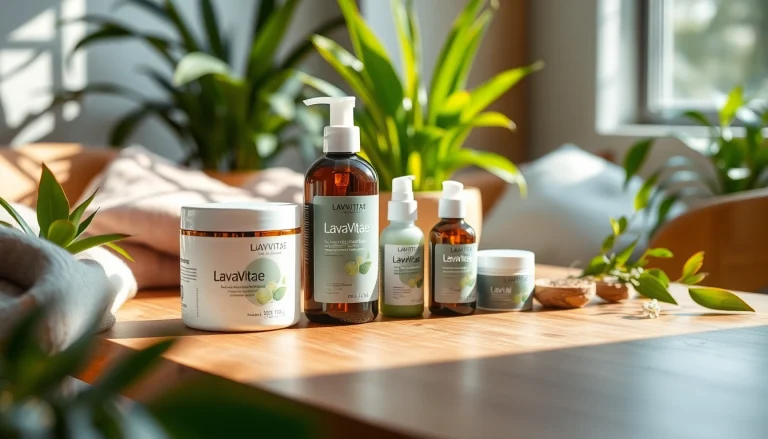Understanding Genital Warts
What are Genital Warts?
Genital warts are soft growths that appear on the genital area, which can occur in both males and females. They are caused by the human papillomavirus (HPV), specifically by strains that are different from those that lead to cervical cancer. Though they can occur in various forms, they are typically small, flesh-colored or gray, and can cluster together to form a cauliflower-like shape. Understanding genital warts is crucial for effective management and treatment, especially in terms of Genital warts removal.
Causes and Risk Factors of Genital Warts
Genital warts are primarily caused by certain strains of the HPV, particularly types 6 and 11. These strains are especially known for their low risk of progression to cancer but can lead to visually uncomfortable and physically irritating warts. The transmission of HPV usually occurs through direct skin-to-skin contact, most often during sexual activities, including vaginal, anal, and oral sex.
Some of the primary risk factors include:
- Having multiple sexual partners increases the likelihood of exposure to HPV.
- Engaging in unprotected sexual activities, which enhances the risk of HPV infection.
- A weakened immune system, which may result from other infections or medical conditions, can hinder the body’s ability to fight off HPV.
- Being younger, as younger individuals are often less informed about safe sex practices.
Symptoms and Diagnosis
Symptoms of genital warts may not always be apparent initially. In many cases, they may only become noticeable weeks or even months after infection. The most common symptoms include:
- Soft, painless lumps or growths in the genital area.
- Itching, irritation, or discomfort around the warts.
- Bleeding during intercourse or other signs of inflammation.
Diagnosis usually involves a physical examination of the affected areas by a healthcare provider. In some circumstances, a biopsy may be recommended to rule out other conditions or confirm the presence of HPV. Cellular changes are often examined through Pap tests for women, particularly in the context of cervical health.
Methods of Genital Warts Removal
Topical Treatments for Genital Warts Removal
Topical treatments are often the first line of defense for individuals seeking genital warts removal. These can be applied directly to the warts and generally involve various chemical agents. Some common topical treatments include:
- Podofilox: A topical solution that can effectively destroy wart tissue when applied twice daily for three days.
- Sinecatechins: An FDA-approved ointment derived from green tea extract that may help to treat external genital warts.
- Imiquimod: A topical cream that enhances the immune system’s ability to fight HPV and can be used several times a week until the warts are gone.
Patients may experience irritation or discomfort during treatment, but these symptoms are usually mild and may resolve with continued application.
Procedural Approaches: What to Expect
If topical treatments are ineffective, there are several procedures that healthcare providers may recommend for genital warts removal. These include:
- Cryotherapy: This method involves freezing the warts using liquid nitrogen, which causes the tissue to die and eventually slough off. Patients may require multiple sessions.
- Electrocautery: A technique that uses high-frequency electrical currents to burn off the warts. Electrocautery can be effective for larger or more persistent warts.
- Laser Therapy: Used primarily for extensive or resistant cases, laser therapy targets wart tissue with focused laser beams, ensuring minimal damage to surrounding skin.
- Surgical Removal: In cases where other methods fail, surgical excision may be performed. This involves cutting away the wart and surrounding tissue.
Workflow for these procedures typically involves a consultation where healthcare providers will review risks, benefits, and expected outcomes with the patient.
Emerging Therapies and Innovations
With ongoing research in the field of HPV and genital warts, several emerging therapies and innovations are showing promise. New vaccines targeting specific HPV strains may provide additional preventive measures against genital warts. Other avenues of exploration include:
- Immunotherapy: Research is focused on treatments that can boost the immune response against HPV, potentially enhancing the body’s ability to fight off warts.
- Gene Therapy: Experimental approaches that target the genetic material of HPV to inhibit its ability to replicate and cause warts are under investigation.
As these innovative treatments evolve, they may offer new hope for individuals struggling with recurring genital warts.
Managing Genital Warts: Aftercare and Prevention
Post-Removal Care for Optimal Healing
Caring for the skin after genital warts removal is crucial to ensure optimal healing. Depending on the treatment received, aftercare may involve:
- Keeping the area clean and dry to prevent infection.
- Avoiding sexual activity until healing is complete to reduce irritation and ensure complete recovery.
- Applying prescribed topical treatments or ointments as directed to soothe any irritation.
Vigilance during the healing process is essential, as this period is a critical time for skin recovery and overall health.
Preventative Measures Against Recurrence
Although treatments can remove genital warts, preventing their recurrence is crucial. Some effective preventative measures include:
- Regular communication with sexual partners regarding health and safe practices.
- Utilizing barrier methods such as condoms, which can lower the risk of transmitting HPV, despite not offering complete protection.
- Receiving HPV vaccinations, particularly for individuals under 26, which can significantly decrease the risk of HPV infections that lead to genital warts.
Adhering to these preventive strategies is vital for maintaining long-term health and wellness.
Living with HPV: What You Need to Know
Living with HPV can be challenging, particularly when it comes to emotional and mental well-being. It is essential to stay informed about the virus, manage health proactively, and maintain open communication with healthcare providers. Regular screenings and conversations with medical professionals can help individuals monitor their health status and address concerns as they arise.
Support groups can also be invaluable, providing emotional backing and shared experiences that can help individuals cope better with their diagnosis.
When to Seek Professional Help for Genital Warts
Recognizing Complications
It’s vital to recognize when to seek professional help. Complications may arise if genital warts are left untreated or mismanaged. Signs that warrant medical attention include:
- Persistent, worsening symptoms despite treatment efforts.
- Signs of infection, such as increased redness, swelling, or discharge.
- Any changes in warts, including size, shape, or color.
Consulting a healthcare provider promptly can help mitigate risks associated with complications.
Choosing the Right Healthcare Provider
Finding a qualified healthcare provider for genital warts management is essential. Patients should consider the following when seeking treatment:
- Look for providers experienced in treating HPV and genital warts.
- Seek recommendations from trusted friends or family, or consult with primary care physicians for referrals.
- Evaluate comfort levels with potential providers; a supportive and communicative doctor can greatly enhance the treatment experience.
Understanding Treatment Costs and Options
Understanding the costs associated with genital warts removal can help individuals make informed decisions regarding their treatment options. Costs may vary depending on:
- The type of treatment chosen (topical vs. surgical).
- Geographic location and healthcare facility fees.
- Insurance coverage and out-of-pocket expenses.
Discussing financial aspects with providers upfront can clarify treatment options and potential financial burdens.
Resources and Support for Individuals with Genital Warts
Helpful Organizations and Websites
Various organizations provide resources and information for individuals dealing with genital warts and HPV. Resources can include:
- The Centers for Disease Control and Prevention (CDC) offers extensive information on STDs, including HPV.
- The American Sexual Health Association provides updates on sexual health topics.
- Local health departments often have resources for free or low-cost clinics offering screenings and treatments.
Support Groups and Community Resources
Support groups can play a crucial role in emotional well-being. Finding a local or online support group can help individuals connect with others going through similar experiences, allowing for the exchange of advice, resources, and encouragement.
Q&A: Expert Responses to Common Concerns
Individuals may have numerous questions regarding genital warts and HPV. Consulting with professionals via Q&A sessions or informational webinars can clear doubts and provide expert insights into personal care, medical advances, and coping mechanisms. Ensuring that accurate information is shared helps demystify HPV and reduce the stigma associated with sexually transmitted infections.




















+ There are no comments
Add yours